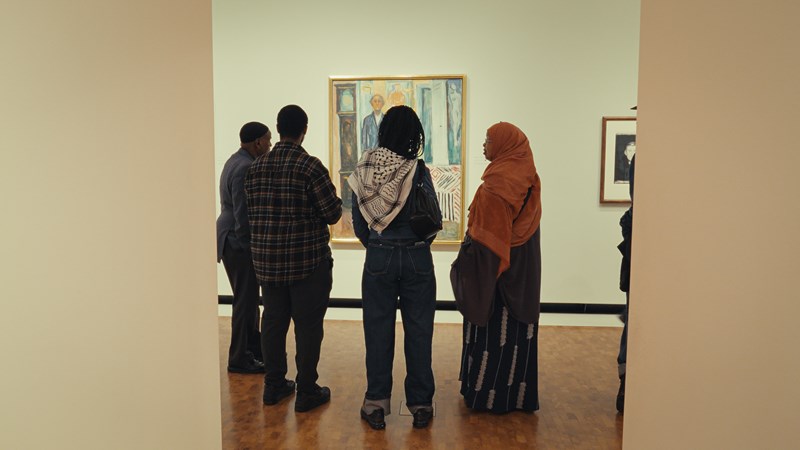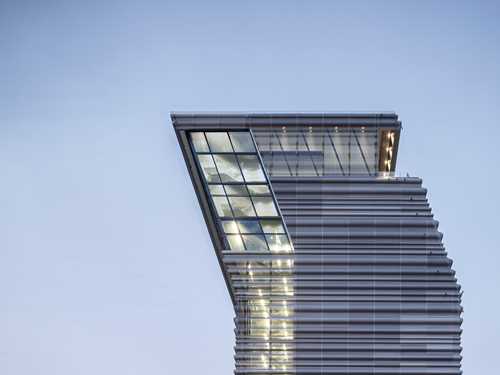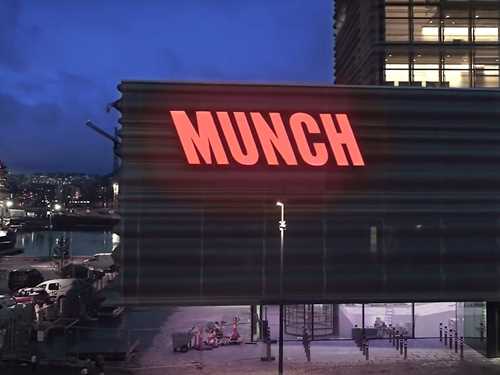Recognising yourself in art, through language
Ifrah Osman, art mediator for the exhibition SOLO OSLO, writes about the role of language in the face of art, and explores what happens when people are allowed to use their own mother tongue in conversations and reflections on artworks and exhibitions.

Photo: Spindel Film / © MUNCH
Whenever we stand in front of a work of art, it’s easy to forget that art is not only visual; it’s also deeply rooted in the language we use to understand and interpret it. But what happens when the words are lacking? When we don’t have access to the language that binds us to our own culture and history? When we talk about representation in art, it’s not just about including different faces or subject matter, but about being open to new languages, new ways of understanding the world. For many, this is a question of belonging, of being able to recognise yourself and your history within the impersonal surroundings of big institutions.
This project was born out of this realisation: That the language we use in talking about art can be a barrier – but also a bridge. The project invited adults from multicultural backgrounds to come on guided tours presented in their own mother tongues. Instantly, we could see that the art was brought to life for them in a whole new way. Their histories and experiences were woven together with the art on the walls, creating a connection which went beyond the visual. During these tours in Somali, Persian and Urdu, we saw the parents, who had often found themselves sidelined to some extent, finding their own voice.
This project is also a personal one for me. I wanted to involve both the parents and their adult children, because I myself have experienced how hard it is to find the right words in Somali to explain my work to my mother. Many of my colleagues have had similar experiences with their own parents, which made it clear that this project could function as a tool for learning native languages – both for myself and for the other grown-up offspring.
Karpe have attempted something similar in their music. On their 2022 album ‘Omar Sheriff’, they use a multilingual speech that adds depth to their stories of growing up and finding an identity in Norway. They break down the language barriers by including Urdu, Arabic and Gujarati, and make listeners feel that their experiences are part of a bigger story. It’s not just about being understood, but also about being seen and heard on your own terms.
In this interpretation project, we also see how this type of linguistic richness can be found in visual art. When the guided tours were held in Persian, the dynamic changed. It was often the parents who took the lead, their voices filled with experience and confidence. Their children listened with curiosity, but also a certain reticence. For the parents, who could at last express themselves in their own language, the conversations became lively. They had more to give, more to share – because their language gave them a sense of authority and self-confidence they often lacked when they spoke in Norwegian. Their children, however, were quieter, more obsevant. They asked questions, but let their parents lead the discussions.
There was something lovely about this reticence. For the first time, the children were using their mother tongue in a situation like this, outside the home. They learned new words, found new ways of associating their native culture with Western culture. One mother said that her child, born and raised in Norway, could do with having more of these kinds of experiences. At home, Persian/Farsi was the dominant language, but outside the home it was rarely used.
For the Urdu-speaking group, it wasn’t the Munch Museum that sparked the biggest engagement, but rather what was happening beyond it – at the Intercultural Museum in Grønland, east Oslo, where the Pakistani artist Sarah Kazmi set words and images to a tale which had been recounted in secret for generations. The exhibition ‘Cooking, Time?’ was about Pakistani immigration to Norway in the 1960s and 70s, about their first steps on Norwegian soil, about yearning, resistance, and the silent hope that went with it. For the participants, who were already willing consumers of art and culture from their own lands, this was a space which felt more like their own.

When the art was discussed in Urdu by Kazmi from Karachi, it provided a deeper understanding of Pakistani identity, what it means to carry a history that stretches across oceans and generations on your shoulders. The invitation to the exhibition did not come from a remote institution, but from a voice speaking their own language, literally and metaphorically. This created an immediate feeling of belonging, a pride over seeing yourself, your roots and culture presented in a way that felt genuine and intimate.
The Intercultural Museum was not just a venue, but an art space aiming to combat prejudice, come up with new ideas, and spread knowledge of other cultures. Thus it became a natural place for these stories to be told unfiltered, without fear of being misunderstood. Here, they weren’t guests, but felt at home, in a museum which made them feel that even their stories deserved a place.
The tours in Somali took place at MUNCH. The participants discussed Edvard Munch’s work in Somali, and through the interpretations of Mohamed Ibrahim Warsame Said – known as ‘Hadraawi’ to Somalis around the world – a gateway was opened between Munch’s art and their own life experiences. Hadraawi’s words resonated deeply; they were a reminder of a poetic legacy which still burned brightly in the older generation’s minds, my own included.
For Somalis, Hadraawi has a significance similar to Munch’s own place in Norwegian culture. He is ‘The Voice of Somalia’, a poet who has captured the nation’s pain, hope and struggle for identity in a poetry that has become part of the people’s soul, just as Munch’s images have formed the Norwegian people’s collective consciousness. As Hadraawi’s poetry was read out next to Munch’s paintings ‘The Researchers’ and ‘The Sun’, it became clear how both artists, in their own ways, have explored life’s big questions – enlightenment, progress and knowledge.
In the middle of the tour, my mother suddenly realised that she actually knew who Edvard Munch was. She remembered the theft of ‘Madonna’ and ‘The Scream’ from the old Munch Museum in 2004. It struck me how much she actually knew, despite only having lived in Norway for three years and that Norwegian was still new to her. She also understood its seriousness and the value of the two paintings. I looked at her in surprise and asked why she had never mentioned it before. She replied that she thought I wouldn’t care, and that she had not made the connection between my SOLO OSLO interpretation project and the Munch Museum. Neither did she know Edvard Munch’s name, although she recognised his works. It’s in moments like these that I realise that my mother is not as cut-off as I maybe had thought – she is interested, it’s just that she hasn’t been included.
Just as Karpe have created powerful bonds between cultures and generations via their music, I want to use visual art to build bridges between people across languages and cultures. This is not just about representation, but about creating a fuller understanding of identity and belonging. Through art, we can open up a space in which different people can see themselves and their histories, on their own terms.
Language and art function as universal tools for communication. They give us the possibility to express ideas, feelings and stories which cannot always be conveyed by words alone. This is especially important when we include first-generation immigrants in art institutions – those who have often been marginalised or excluded. By bringing in their voices via art and language, we don’t just create a connection between generations, but also a deeper insight into the cultural riches that shape our society.
Visual art and language contain the power to challenge perceptions, stimulate critical thinking and show empathy. When we use art as a way of connecting people, we aren’t only making a contribution to inclusion, but also to a broader cultural understanding and a richer quality of life in society.
About the interpreters:
Mehwish Dar – Urdu interpreter
Dar works as digital strategist for Greenpeace Norway and is an engaged climate activist. She sits on the board of the Madina Institute, a small but significant mosque, and runs a poetry club together with the activist-created library Assata. With a cultural background from Pakistan, Dar was born and grew up in Norway, and she is proficient in many languages including Urdu, Punjabi, Hindi, Norwegian and English.
Elnaz Azadpour – Persian/Farsi interpreter
Azadpour is an art historian, curator and educator specializing in contemporary art. She has an MA in art history from Oslo University, where she wrote her master thesis on art activism. Elnaz has experience at MUNCH as a trainee educator, and has contributed to the digital art interpretation team, writing texts and translating. She has also distinguished herself as a research assistant for the exhibition ‘Every Moment Counts – AIDS and its Feelings’ at Henie Onstad Art Center. Elnaz currently works as a librarian at Deichman, as well as working on her own art projects. Originally from Iran, she came to Norway to study and speaks fluent Persian, Norwegian and English.
Foad Dahir Mohamed – Somali interpreter
Dahir works as a counsellor at JobbX at the Anti-Racism Centre in Oslo. He is also a designer and artist, and is studying product design. Dahir’s art involves reflecting on experiences of the diaspora.





